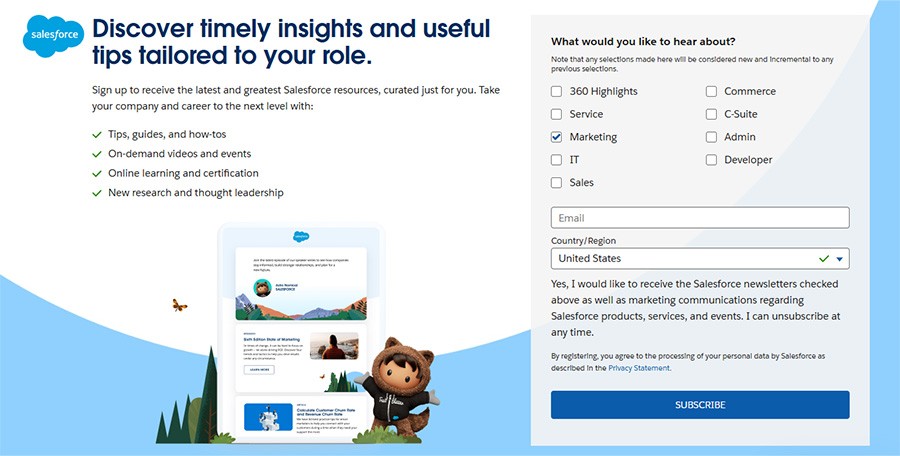Back in its heyday, email’s average return on investment as a marketing tactic was pretty high (around $36 for every $1 spent, according to Forbes). But that’s changing. Nowadays, only around 8% of marketers report it as effective for lead generation. Reaching your email marketing goals is challenging unless you send the right messages to the right subscribers at the right time. That’s why growing your email list (with only the most appropriate subscribers) is so essential to any successful email marketing strategy.
Looking at the falling stats, it’s clear that all lists aren’t created equal and some marketers are falling behind because they’re not reaching the most relevant audience. You can’t just email anybody and expect to get good results. While the benchmarks vary dramatically depending on the industry, no matter what you measure, organically built lists with subscribers that tell you they’re a good fit (and have consented to be contacted) blow purchased “cold” lists out of the water.
Keep reading to learn more about growing your email list, including our seven best tips to help you find people in your target audience (and convert them into subscribers).
Why email marketing works
A Nielsen Norman Group study found that 90% of people prefer receiving updates by email than on Facebook. It’s convenient to have the information they want delivered to them.
Email has a longer shelf life than a social media post, too. Your audience has many chances to read an email that stays in an inbox, whereas fleeting social media content tends to disappear quickly.
Who should you email?
As you’ve probably guessed by now, it’s best to attract opt-in subscribers—when it comes to growing your email list—since they’re almost always the most highly engaged audience you can reach through this channel.
This is why, in fact, so many experts say buying email addresses wastes money. You won’t know if the recipients are interested in your product or service or if the message goes to junk mail. You want subscribers who choose to engage with your brand.
When someone subscribes to your email list, they indicate a strong interest in your brand, product, or service. It’s one of the most highly qualified leads money can buy. Email marketing offers a chance to engage customers on a personal level and build relationships.
If you haven’t done so already, create buyer personas to build a strong foundation for your email list segmentation. (More on segmenting to come.)
7 tips for growing your email list
Email marketing has evolved into a sophisticated practice. The management tools provide more data on your customers and more ways to reach them with targeted messaging than ever before. Optimizing the impact of your email newsletter and promotions has a long tail of value for your marketing strategy.
Refine your opt-in
The email opt-in is a digital marketing tool you offer so people can subscribe to your emails. It’s the most essential strategy for growing your email list. There are two types of opt-ins:
Pro tip: Ask for a name during sign-up so you can personalize email messages, but make providing it an optional field.
- Explicit: The person provides an email address understanding it will be used for marketing communications.
- Implicit: The person provides an email address for a different expressed reason, such as creating a customer account, and agrees to a policy that includes receiving marketing communications.
You should consider having explicit opt-ins in these places:
- On your website’s landing page
- On your “about” page
- In your website’s sidebar
- At the end of any digital marketing communication
- On your social media accounts
Your email opt-in can be a static form on your website or a pop-up box. In terms of growing your email list specifically, researchers have found that pop-ups have a 10% conversion rate compared to 2% for forms.
The days of generic “Hey, sign up for our newsletter!” prompts are gone. Your opt-in message should explain why someone should sign up to receive messages from you (aka, how you will deliver value) while boosting your brand with the right voice and design. Keep the sign-up short and straightforward, but take its strategy and design to the next level.
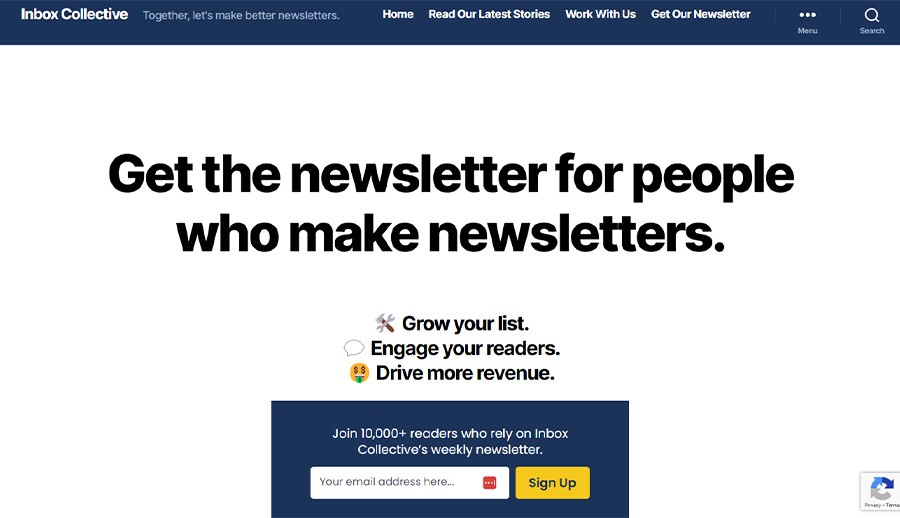
Embrace segmentation
When it comes to growing your email list, the task of segmenting entails dividing subscribers into smaller lists based on criteria such as demographics, preferences, or behaviors.
Segmentation supports personalized email marketing by using data to identify an audience for a targeted message—less of an email blast than a bullseye. One study found that segmenting email communications can increase sales sixfold.
Email segmentation (and more targeted email content—see the next tip for more on personalization) have many benefits, including:
- Fewer unsubscribes
- Higher open rates
- More efficient email content creation (because messaging is focused)
- Better customer metrics and insights
- More opportunities for personalization to make your emails standout in subscribers’ inboxes
Pro tip: Customize segmentation categories in your email service provider (ESP) to fit your needs instead of relying on the prebuilt segments.
Common email list segmentation categories include:
- Demographics, like location, age, household size, occupation, and sex/gender
- Customer behavior, such as how frequently they open emails, make a purchase, respond to a sale, visit your site, device type, amount spent, and cart abandonment
- Psychographics, including values, interests, and lifestyle
You may not ask for this data when subscribers first sign up to receive emails. You can collect it over time through engagement, surveys, and purchase history.
Pro tip: Segmentation has gone from an email marketing buzzword to a standard practice. Most email service providers (ESP) include segmentation tools without an upgrade charge.
Step up personalization
Like segmenting, personalization doesn’t directly bring you new subscribers, but it keeps your current list engaged and more likely to become a referral. You can use personalization tactics to incentivize current subscribers to recommend friends.
Personalization is one of the most important strategies in email marketing. It starts with using the recipient’s name or salutation in the subject line and extends to celebrating milestones and birthdays, sending targeted offers, noting account details like current rewards status, and welcoming new customers after first purchases.
Personalized communications increase unique open rates by 29% and unique click rates by 41% (Salesforce). And 70% of people expect personalized emails (McKinsey & Company).
Pro tip: In your email marketing platform, customize a template with graphics from your website so your messages fully align with your established brand identity.
However, only 5% of companies personalize by taking advantage of the extensive personalization options available now. That means you can gain a competitive edge by investing time and resources into better connecting with your subscribers.

Pro tip: If you incorporate pictures and illustrations as part of your email personalization strategy, remember to optimize your graphics because the more art you use, the longer your email’s load time (and too many photos or visuals with a large file size can affect deliverability).
Hold a giveaway
Everyone likes free stuff. Running a giveaway promotion is one of the best ways to leverage social media to start growing your email list subscribers.
Pro tip: Pair up with a like-minded company to increase the promotion’s reach and build a strong brand partnership. For instance, a healthcare company could partner with a gym or bicycle brand with a similar demographic or location, share the cost of the giveaway, and cross-promote to each audience.
Be aware that giveaways can attract junk email addresses and bots, which aren’t quality leads. Avoid generic prizes like cash or tickets and offer your own product or service instead.
A physical therapist might offer a wellness product developed in-house or one from a top vendor, like a Theragun. A web designer could provide a site audit or noise-canceling headphones. A professional coach could give away a consultation or a registration to a career-development conference in the area.
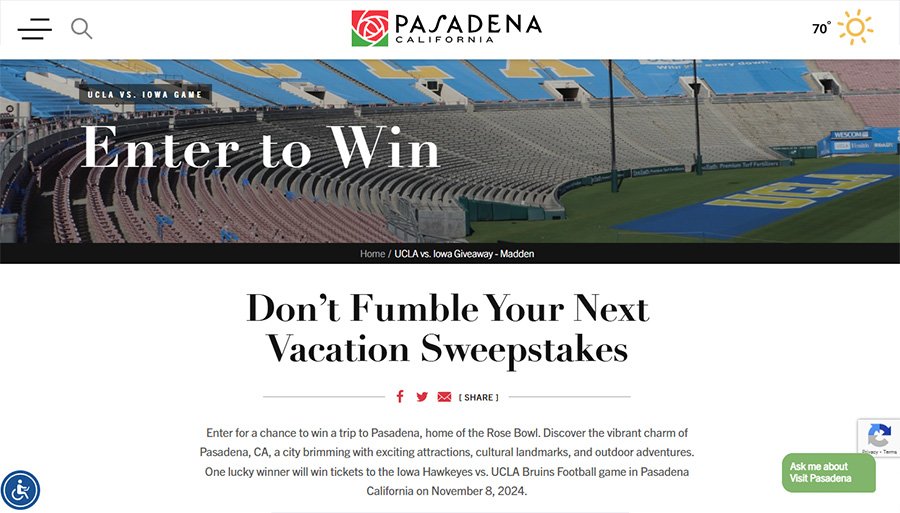
Offer a freebie
This is similar to a giveaway, but it’s not a contest. With a “freebie” offer, everyone gets a gift when they sign up for your email list.
That “freebie” could be a myriad of things. Some companies offer new subscribers discounts on purchases or free shipping. Others provide access to videos, cheat sheets, ebooks, worksheets, and similar assets.
Pro tip: Embed the offer as an upgrade on a blog post on a related topic. For example, a post about preventing sports injuries prevention on a medical practice’s website could offer access to a checklist for picking the best shoes for running or a video explaining how to treat minor injuries at home using the R-I-C-E method.
Whatever you do, remember to make the freebie you’re offering immediately accessible! Today’s consumers expect instant access to discount codes and online content. Meeting these expectations is essential for growing your email list.
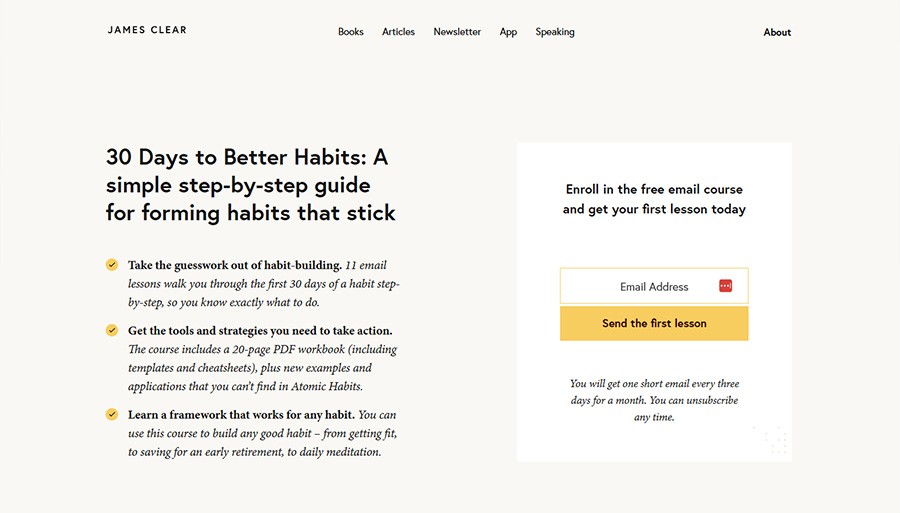
Improve your SEO
Driving the right demo to your website will fill your pipeline with quality prospects for new email subscribers. Because SEO algorithms are constantly changing, Hubspot recommends revising your keyword strategy quarterly (and three to six months before launching a major campaign).
Pro tip: Understand your “content gap” by doing competitor SEO research to identify topics you should be covering. A social media strategist can help. Improving your blog will boost your SEO score and get your message in front of more people, generating leads for growing your email list.
Other ways to increase your SEO score include designing your site with Google’s crawler in mind, removing content that subtracts from your SEO score, and adding alt text to images. SEO is a science that pays off in the form of a higher search ranking, more site traffic, and, ultimately, high-quality leads who want to receive your emails.
Rekindle engagement
Winning back dormant subscribers is a smart way to grow your email subscribers—engaged ones, anyway. Mining your own list can be cheaper and more effective than reaching brand-new customers. Target some of your best former customers who haven’t opened an email or made a purchase lately with new content or an incentive.
A re-engagement effort should be a campaign, not a single email. The common steps are:
- Email 1: Reintroduce your brand.
- Email 2: Solicit feedback on what the user wants and values.
- Email 3: Offer a promotion to incentivize action.
- Email 4: Ask if the user wants to unsubscribe if there has yet to be a response.
Pro tip: Delete unresponsive subscribers. Zombies and ghosts bring down your open and click-through rates, which affects your email deliverability rating—the likelihood that your email will be marked as spam.
Your ESP can automate a campaign based on the recipient’s response to the above emails. For instance, if the subscriber provides the feedback requested in Email 2, you can automatically schedule another email with a relevant offer or message.
If the person lets you know about a fitness habit, their next email can include a personalized introduction praising those healthy choices, followed by a discount for a therapeutic massage or self-care products and links to related content on your blog.
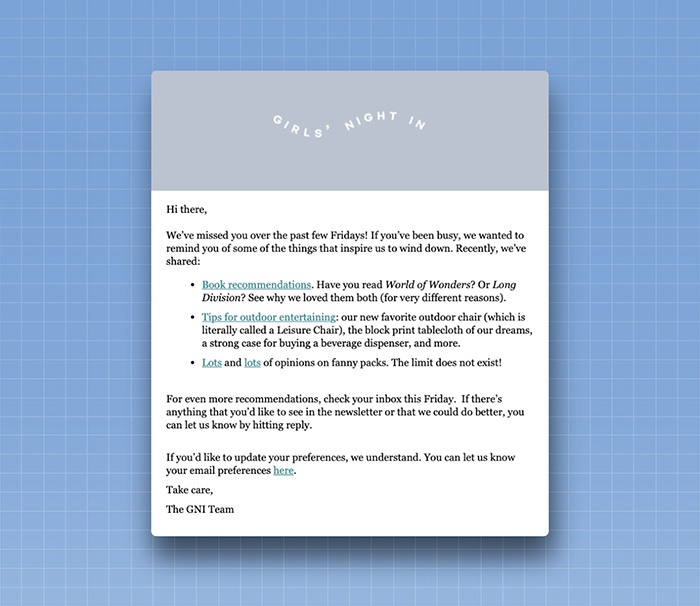
Ready to reach more customers via email marketing?
The best way to start growing your email list—and keep your subscribers engaged—is to offer valuable content behind a robust digital marketing strategy. If yours could use a boost, let’s talk. TBH Creative specializes in creating content that makes a measurable impact by deepening your customer relationships.
